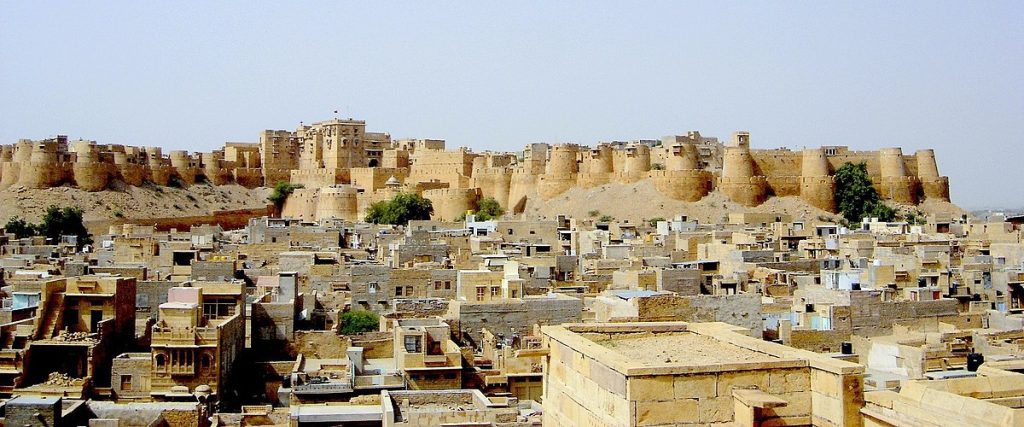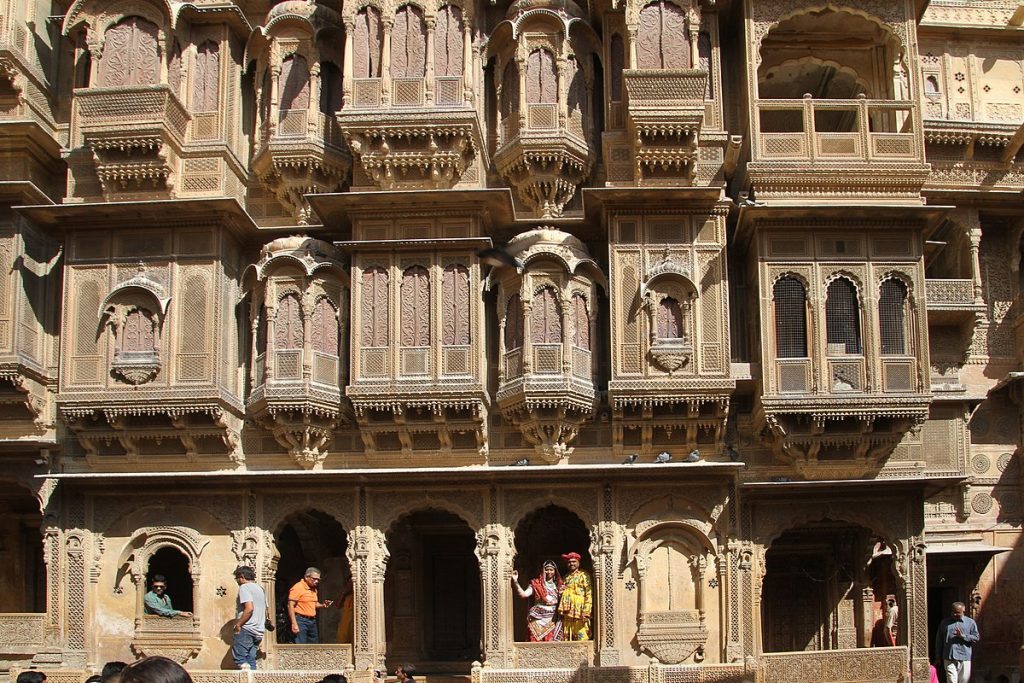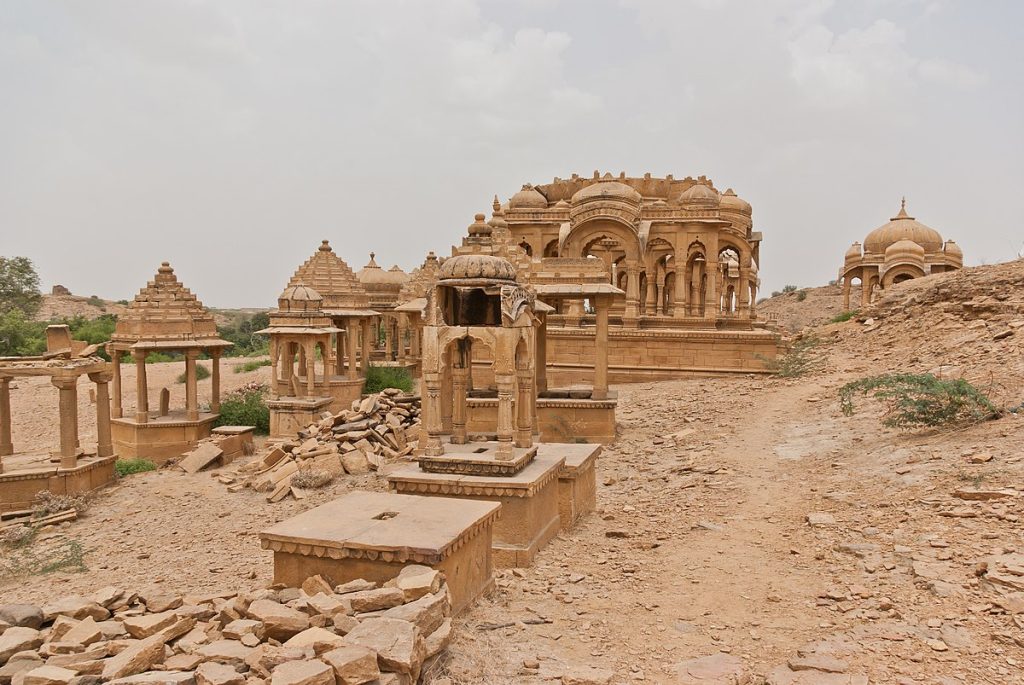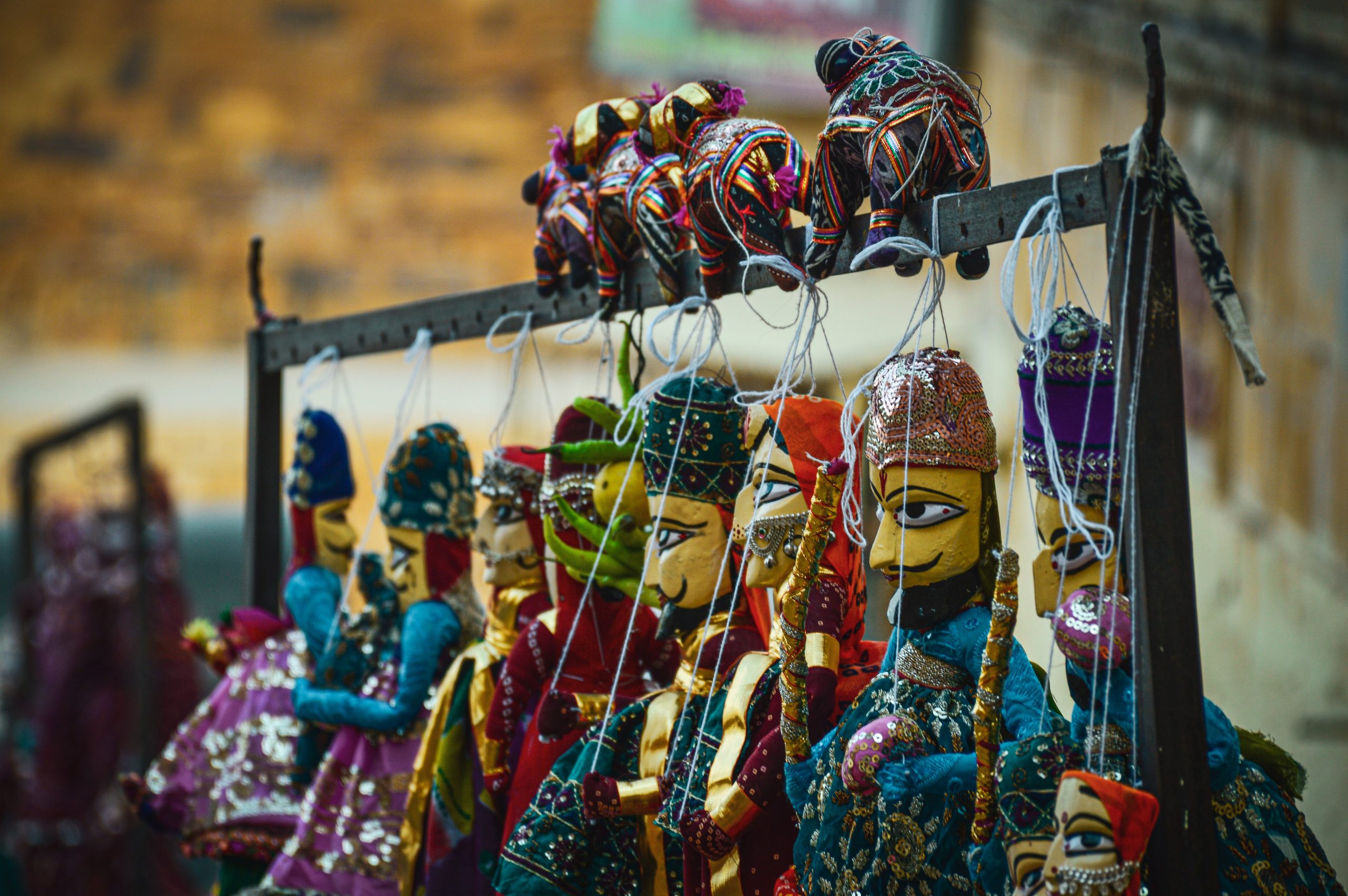Nestled deep in the expansive Thar Desert near the Pakistan border, Jaisalmer seems to emerge from the sandy landscape like a golden mirage. Known as the “Golden City” for its yellow sandstone architecture and commanding hilltop fort, Jaisalmer has long been a popular stop on Rajasthan tours. Let’s explore this desert gem together!
How to Reach Jaisalmer
Conveniently located on the overland route between Delhi, Jaipur, Jodhpur and the India-Pakistan border, Jaisalmer can be reached by air, train or a long yet scenic road trip. The city has an airport with several flights a day from major Indian cities or one can take an overnight train from Delhi or Jaipur. For ultimate flexibility, an SUV rental makes touring the desert easy.
Accommodation in Jaisalmer
With a wide range of places to stay, Jaisalmer has something for every travel style and budget. The range starts from INR 500 dorm beds to INR 20,000 ultra-luxury desert camps! Many boutique hotels are carved into ancient havelis (mansions) offering a peek into history and culture. I loved unwinding at Shahi Palace, a haveli turned hotel with intricately carved balconies, jharokhas and sandstone walls.
Top Experiences
Perched atop Trikuta Hill, the imposing 12th century fortress is a living treasure with 99 bastions and mazes of streets hiding exquisite stone carvings, bustling market squares, ornate Jain temples and panoramic desert views. A few hours are well spent wandering the fortress on foot.
Places to Visit
Jaisalmer Fort

The sprawling Golden Fort envelopes an entire city within its walls. Wander through narrow lanes lined with havelis and carved sandstone architecture. Jaisalmer Fort is a living urban treasure that envelopes an entire township within its imposing walls. As Rajasthan’s only hilltop fortification still inhabited today, meandering through the bustling narrow alleys lined with havelis and exquisitely carved sandstone facades offers a glimpse into medieval history and culture. Towering atop Trikuta Hill, the colossal 12th century fort complex houses 4 massive gateways. Several opulent Jain temples intricately graven with images of mythical figures, a royal palace – the Maharaja’s Palace with carved pillars and archways, a temple dedicated to the patron deity of Jaisalmer’s royal lineage. The fort complex houses a plethora of handicraft emporiums and eateries. Don’t miss witnessing magnificent uninterrupted views of the sprawl of golden Jaisalmer city and the desert wilderness beyond from the fort ramparts.
Patwon Ki Haveli

This elaborate five-storey mansion has exquisitely carved pillars, archways and hundreds of small windows. Undoubtedly Jaisalmer’s most iconic and photographed mansion ruin, this spectacular five-storey architectural wonder will floor you with its craftsmanship. Nestled in a busy lane, the 200-year-old sprawling edifice has been meticulously restored. Patwa was a famous trader family who commissioned five individual havelis that were later joined. Intricately chiseled sandstone elephants and pillars, imposing archways, hundreds of tiny porthole windows, a diverse range of ornamental wall decor, vibrant murals and rooms brimming with antiques give you a glimpse of the lavish merchant lifestyle of yore. Make sure you stand in the central hallway and look upwards towards the ceiling for the most breath-taking view of the symmetrical geometry. Don’t miss clicking photos at the brilliant panoramas of the city visible from the Haveli rooftop!
Nathmal Ji Ki Haveli
Marvel at the unique architecture with two identical halves carved by two brothers. This late 19th century twin mansion located near the fort looks identical from the exterior but bears no similarities once you step inside! Legend says the structure was crafted by two architect brothers who took it up as a challenge to shape two indistinguishable yet unique homes. A narrow passage divides the haveli. Each section has a distinct carving and ornamentation style that’s equally intriguing. Marvel at the fine workmanship of the miniature ivory colored replica of Mahatma Gandhi on the exterior wall – an incredible amalgam of modern art on an ancient canvas!
Gadisar Lake
Ringed by temples and ghats, this picturesque artificial lake was Jaisalmer’s only water source. Built in 1367 by Maharawal Gadi Singh to end water woes. This striking manmade reservoir served as Jaisalmer’s only water storage and conservation area thereby facilitating settlement and trade. Enveloped by shrines and large multi-layered sandstone ghats combining Rajput and Mughal architectural nuances, part of it later became a pilgrim corridor. The artistically sculpted gateway has several small nooks allowing citizens to wash clothes on a series of descending steps. You will enjoy exploring the labyrinthine walkways ringing the lake and observing golden Jaisalmer against blue lake ripples. Visit in winter to sight migratory birds and waterfowl en route to seasonal wetlands.
Bada Bagh

Visit the royal cenotaphs at Bada Bagh dating back to the 16th century set in a garden with chhatris and freedom fighter memorials. Located 6 km from Jaisalmer among arid wilderness, this royal necropolis forms an oasis with numerous chhatris (elevated dome-shaped pavilions atop pillars). Used as funeral monuments for Jaisalmer’s royal lineages, the compound has around 15 cenotaphs honoring deceased Maharajas along with their successors after cremation. The congratulatory sandstone structures bear the trademark Rajput-Afghan architectural hallmarks like carved balusters on the base molding and distinctive onion shaped domes. The memorial of Jai Singh II has some of Jaisalmer’s most intricate relief carvings glorifying his reign and valor. There’s also a memorial paying homage to soldiers who perished in the Indo-Pak wars. Take a heritage walk here while admiring the fruits and vegetables from nearby farms.
Kuldhara
Take a day trip to the intriguing, haunted ruins of the abandoned village near Sam Sand Dunes destroyed in 1825.
Camel Safari
Gliding through desert solitude aboard my humped guide into spectacular dune vistas during an overnight camping safari proved incredibly serene. Sleeping under a blanket of stars after local music and dance performances was ethereal.
The Ultimate Flavors
Jaisalmer dished out incredible Rajasthani flavors! I relished the velvety ker sangri gravy with bajra rotlas, the fiery laal maas warming me to the core. And how can I miss relishing about creamy gatte ki sabzi with drowning flaky pooris. I also tried mithai(sweets) like ghotua peda and mouthwatering gulab jamun!
Cultural Immersion
The swirling trails of glittering mirrored skirts during a special Kalbeliya dance show enthralled me. I also learnt handprint techniques for traditional block printing from local artisans.
Travel Tips
Late September to March sees pleasant weather but it gets very hot starting April. Cotton clothes, hats, sunblock and sturdy shoes are musts for desert touring along with ample drinking water. Respect cultural traditions and refrain from public displays of affection.
Sipping cutting chai watching the amber fort glow golden in the dawn remains etched in memory. Interacting with vibrant turban-clad locals made me appreciate the resilience supporting their communities against harsh desert climes.
Let’s keep this travel conversation alive!
